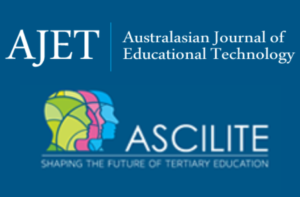Helping doctoral students crack the publication code: An evaluation and content analysis of the Australasian Journal of Educational Technology
 Getting published in an academic journal is no easy feat, especially for doctoral students and English as a second language speakers, seeking to publish in English. Considering the relatively low acceptance rate for educational technology journals, this article seeks to provide guidance by following the framework of rigour, impact, and prestige (West & Rich, 2012) to evaluate the Australasian Journal of Educational Technology (AJET), as well as applying computer-assisted content analysis techniques in new and unique ways, in order to understand how AJET is furthering scholarship in the field. Findings reveal a strong focus on Asia-Pacific scholarship, with little representation from other continents. However, the editors are seeking to improve this, by providing regular advice in editorials for conducting rigorous research and hints on how to get published. Future research trends are identified, including teacher development, learning environments and cognition, and the role of feedback in student learning. In addition, recommendations to editors and doctoral students are provided.
Getting published in an academic journal is no easy feat, especially for doctoral students and English as a second language speakers, seeking to publish in English. Considering the relatively low acceptance rate for educational technology journals, this article seeks to provide guidance by following the framework of rigour, impact, and prestige (West & Rich, 2012) to evaluate the Australasian Journal of Educational Technology (AJET), as well as applying computer-assisted content analysis techniques in new and unique ways, in order to understand how AJET is furthering scholarship in the field. Findings reveal a strong focus on Asia-Pacific scholarship, with little representation from other continents. However, the editors are seeking to improve this, by providing regular advice in editorials for conducting rigorous research and hints on how to get published. Future research trends are identified, including teacher development, learning environments and cognition, and the role of feedback in student learning. In addition, recommendations to editors and doctoral students are provided.







